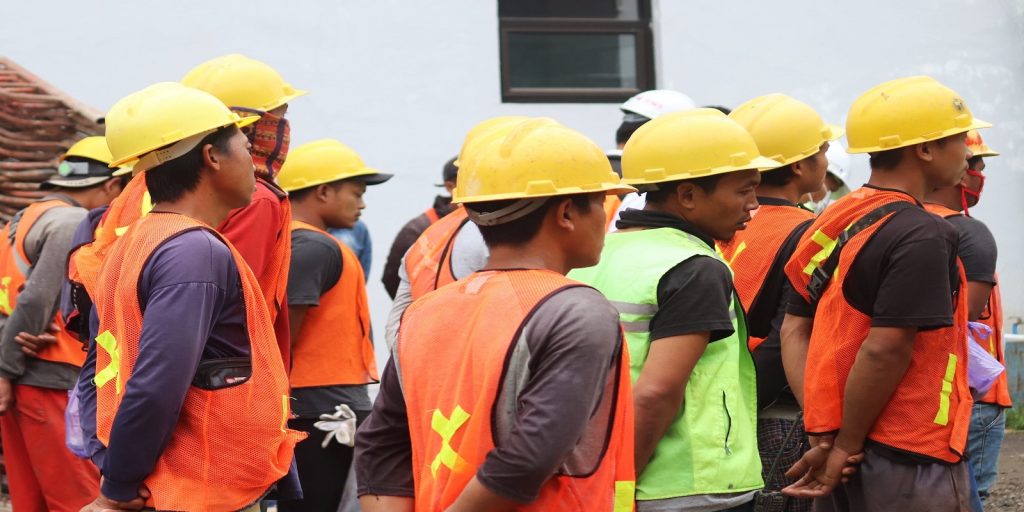Noting that OCEANIA VISA & MIGRATION SERVICES is not an Australian asylum seeker, we intend to introduce you to the Australian Humanitarian Visa, types and conditions for obtaining it in this article. We try to cover all the steps and difficulties in obtaining a humanitarian visa to get more acquainted with its dimensions, but this is not a reason to recommend using this method.
Australian Humanitarian Visa
What is an Australian Humanitarian Visa?
You have probably heard the word humanitarian visa. A humanitarian visa, commonly known as a refugee visa, is a visa issued by governments to people at risk.
Humanitarian visas are issued to asylum seekers who are experiencing difficult conditions in their home country. According to the Geneva Convention, to which many states are parties, states are required to issue humanitarian visas to asylum seekers and to provide them with a place of residence in their own country.
People who enter a country on a humanitarian visa usually have the opportunity to bring their family there as well. In this case, it is even possible for these people to obtain permanent residence in Australia.
Humanitarian visas are issued by some developed countries to people living in an insecure, war-torn country or in a country in general where living conditions are difficult. The humanitarian visa issued to many people in Afghanistan after the Taliban invasion is an example of a humanitarian visa.
Types of Australian Humanitarian Visas
Subclass 200 Humanitarian Visa
This visa is usually reserved for people who are being harassed in their country of origin, and eventually countries such as Australia will offer permanent residency in this area. Finally, asylum seekers can be identified by the High Commissioner for Refugees and referred to the Australian Government for resettlement.
Subclass 201 visa
This type of visa is also for people who reside in their own country But they are persecuted and as a result they can not find another country to find refuge and therefore live in their country of origin. The 201 visa is for people who have an official letter of introduction from an Australian Cabinet Secretary or a first-degree family member (spouse and children) who immigrated to Australia through this visa.
Subclass 202 visa for human protection
This type of visa is also for people who have not applied for a visa but have been subjected to serious harassment and have also been discriminated against.
Subclass 203 visa or emergency rescue
There are people who are in serious danger and emergency in their country, and in addition, their families are also in serious danger. Finally, these people can apply for residency in Australia with this type of visa. This type of visa is an immediate visa, which is processed very quickly. It can be said that in fact the Australian embassy does not procrastinate in this regard because any procrastination will lead to serious harm. This visa has very special conditions and does not apply to everyone.
Subclass 204 visa for women with-out guardians at serious risk
This type of visa is also for those who live abroad of their origin and also do not have a guardian or spouse and have been exposed to serious harms along with their children, including sexual abuse. Please note that these individuals are usually identified by the High Commission for Refugees and eventually referred to the Australian Government in order to obtain an Australian Humanitarian Visa.
Subclass Visa 866
This visa is designed for people seeking asylum from Australia. The 866 visa is also intended for individuals who will be severely harassed if they return to their home country or who have been severely harassed or discriminated against before leaving the country.
Accompanying visa
People who want to enter Australia on a humanitarian visa can bring their family with them after a while. This is not possible with a 204 subclass visa.
8 Tips on the Australian Humanitarian Visa
1. Obtaining Australian asylum is very difficult and complicated for volunteers. The Australian Government often rejects the applications of many applicants. Individuals who eventually obtain Australian asylum can no longer return to their home country. For this reason, the experts of the OCEANIA VISA & MIGRATION SERVICES do not recommend asylum as a suitable way to immigrate.
2. The number of people seeking asylum in Australia is small. Of the approximately 36,000 asylum applications received in 2019, only 12,000 were approved. Most of these people were from crisis-hit countries such as Syria and Afghanistan.
3. It is very difficult to get Australian asylum. Only about 10,000 people from around the world apply for asylum in Australia each year.
4- By visiting The Special Humanitarian Program website, you can get acquainted with the types of humanitarian visas and the conditions for applying for them. The Australian Government has set up an official website to inform and explain all the rules and regulations related to the asylum process.
5. When applying for asylum, the applicant can include the family in the program. You can also add family members to your schedule at any time before deciding on your application.
6- Family means spouse, children, other dependents (parents, siblings, grandparents, grandchildren, aunts, uncles, nieces, nephews or cousins).
7- If the child is not dependent, he / she must apply for his / her visa separately.
8- It is recommended that the applicant introduce all members of his family, even if he is not supposed to apply. If an applicant does not declare a family member in their application, they may not be able to apply for a refugee and humanitarian visa upon arrival in Australia.
Final point
OCEANIA VISA & MIGRATION SERVICES is one of the leading immigration agencies in the field of immigration, which, given its illustrious history, can accompany you like a caring companion along the way, but in the case of the Australian Humanitarian Visa, the issue is slightly different. This article is for information only and OCEANIA VISA & MIGRATION SERVICES has no activity in this area. It is good to know that the asylum situation in this country has become very difficult in recent years, and Australia is one of the countries that refuses to accept such people and may even not accept their application. Under the law passed in 2014, people who enter the country illegally are sent to a third country to have their asylum process decided by the Australian Government. Please note that these individuals cannot apply for asylum or an Australian humanitarian visa on Australian soil. In addition, if these people enter the waters of this country by boat and apply for asylum, their boat may be returned to international waters.
















